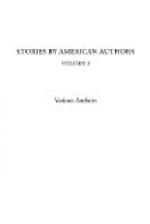As will now be seen, this was a fortunate decision. The unremitting bombardment which had been maintained by the four vessels off the Long Island shore had so greatly reduced their supply of ammunition that it became necessary to send for more: and for this purpose the “Vittoria” was dispatched to meet a transport which had been ordered to sail from Cuba at about this time.
On the evening of the third day the weather assumed a threatening appearance, and the “El Cid” left her position near Fort Hamilton for a more secure anchorage near Sandy Hook. The other ships stood out to sea.
It stormed heavily during that night, and before evening on the morrow one of the strongest gales ever known in this vicinity had set in.
The situation in which the Spanish flag-ship now found herself was critical. She had put down her two bower anchors, but they were clearly insufficient to hold her. To veer out cable was dangerous, for it was not known how near the ship was to sunken torpedoes; to allow her to drag was to run the double chance of striking a torpedo or going ashore.
During the night she parted both cables, and the morning found her firmly imbedded in the beach off the Hook. Of the other vessels, the “Numancia” only was in sight.
The signal men, however, could see black smoke on the horizon; and this they anxiously watched, expecting momentarily to make out the “Arapiles” and “Zaragoza.” Shortly after daybreak, a thick fog settled down, completely cutting off the seaward view.
In the signal station were General Grant and several members of the Safety Commission. The ransom money was in readiness, and the intention was to pay it over during the morning.
At about eight o’clock, heavy firing was heard from the sea.
It was too far distant to be accounted for by a supposed renewal of the bombardment by the Spanish ships, even under the assumption that they had thus broken the truce.
The watchers at the signal station looked at each other in astonishment, and eagerly waited for the fog to lift.
An hour later, the mist began to clear away. The sight that met the eyes of the spectators was one never to be forgotten.
The “Numancia” was evidently ashore on the East bank. Her fore and mainmasts were gone, and clouds of dark smoke were lazily ascending from her forecastle. Suddenly, the whole ship seemed to burst into a sheet of flame, there was a deep explosion, the air was filled with flying fragments, and a blackened hull was all that was left of the proud man-of-war.
The “Arapiles,” about two miles further out to sea, was making a gallant defense against three strange vessels. Two, lying at short range on her quarters, were pouring in a fearful fire; the third, which had evidently been engaged with the “Numancia,” was rapidly bearing down upon her, apparently intending to ram.
Who could the strangers be?




